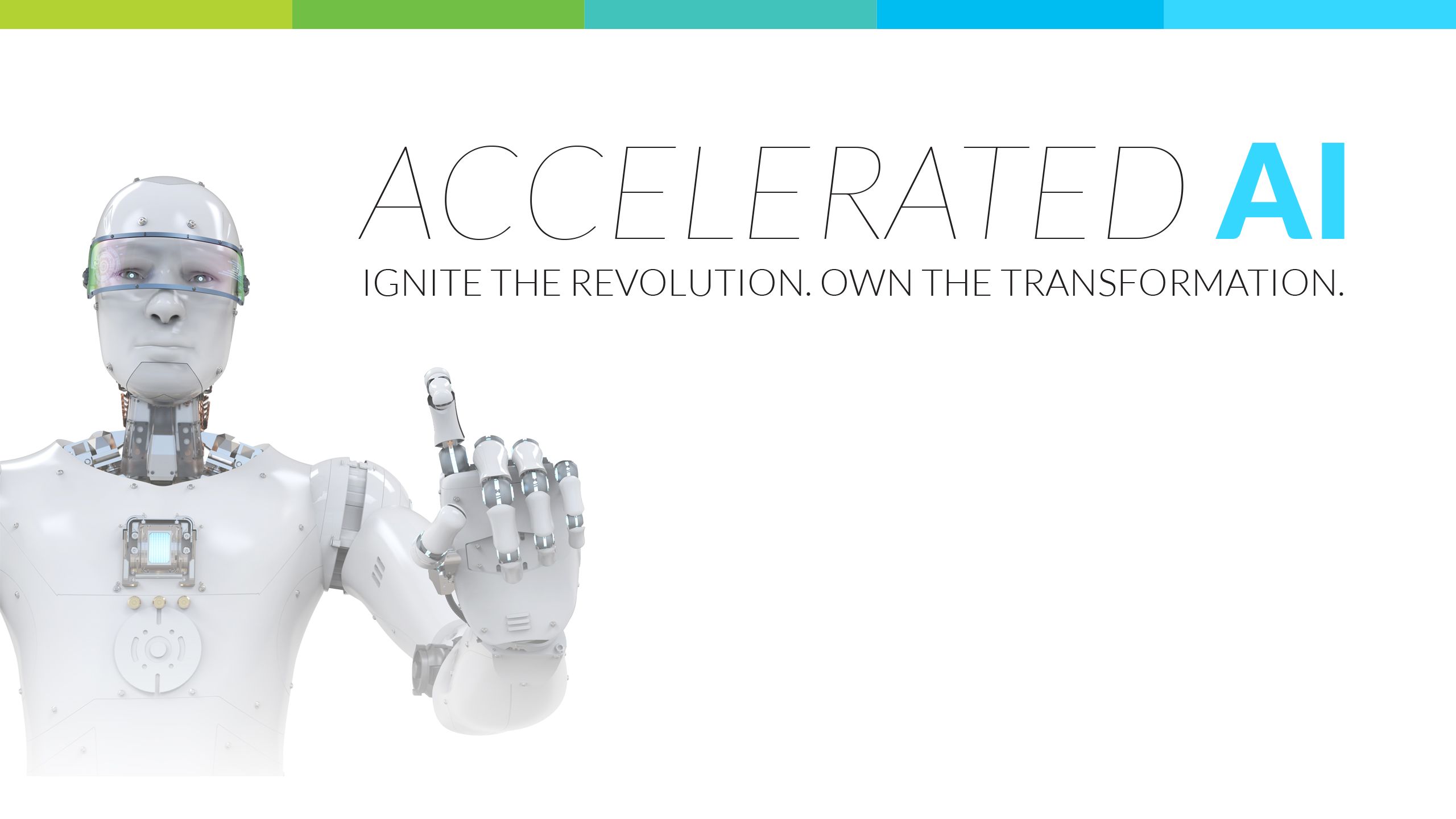Speed to Mission Value
Dell EMC is committed to solutions that provide speed to mission value


Dell EMC, NVIDIA and GAI are working together to help agencies accelerate their path to artificial intelligence in order to drive mission success.

Artificial intelligence is changing the world. It can make our lives easier, at once expanding our options while simplifying decision-making – about how to get to work, what to watch, or what to buy.
For the general population, AI affects nearly everything consumers touch. Yet in government, the power of AI is still measured more in potential than reality. For federal agencies, AI holds the promise of faster decisions, more prescient forecasts, richer customer experiences and better outcomes.
Steve Harris, senior vice president and general manager at Dell EMC Federal, has been working in this space for years. He’s seen IT revolutions come and go, while the AI revolution always seemed just around the corner. Today, decades after researchers first began toying with expert systems and machine learning, AI is no longer beyond reach. “We can do this right now,” he says.
“A decade ago, the machines weren’t powerful enough, transporting the data was still a problem, and we didn’t have the tools to clean up the data and organize it,” Harris says. “But today, we can deliver complete solutions for AI. Even if your data is still messy, we’ve got tools for the cleanup. We can solve these problems now.”
The Needs Driving AI for Government
The driving needs are clear enough. Government workloads aren’t shrinking – they’re growing. Resources are finite. A modern infrastructure isn’t just a nice-to-have. It’s an essential part of any agency’s strategy to cope with an expanding demand for data and services with limited resources.
“You can’t hire your way out of these problems. But you can leverage the power of modern computing,” Harris says.
Whether implemented in the cloud or in on-site data centers, high-end processors can now perform complex tasks faster and more accurately than people.
But this isn’t about replacing people – it’s about the force-multiplier effect and freeing staff resources for higher-level work, Harris says.
Today’s denser data storage and high-speed computing solutions, built on highly parallel processor arrays – using the same NVIDIA graphics processor technology that powers everything from streaming video games to familiar AI solutions from Google, Facebook and Amazon – can change the nature of much of what government does.
"All those consumer applications – Amazon, Facebook – they are, at their most basic level, decision aids," says Harris. “Government needs decision aids, too.”
The internet giants leverage their global reach and the massive volumes of data their users generate not only to capture those users’ imaginations and hold their interest, but to accelerate decisions like which movie to watch or which coffee shop is closest. By recognizing patterns in what users search and select, they learn what information their customers want and can more readily anticipate those needs in the future.
This same ability to intuit what users want is no less helpful in government and business, Harris says. Once again, by layering data and context, machines can learn to identify patterns and trends faster and more accurately than humans – in the process freeing people from rote work to focus on creativity and innovation.
Image analysis is an ideal example. Computers can easily be trained to seek and recognize patterns in traffic videos, surveillance tapes, or sonograms. People are fallible. They get tired or distracted or simply bored. Unlike human beings, computers never tire. Additionally, machine learning algorithms aren’t just more effective than people at such tasks, but also continue to get better over time.
Or, consider cybersecurity, which Harris sees as uniquely suited to AI because monitoring network traffic and activity is literally beyond human capacity: it’s virtually impossible to defend enterprise networks without relying on some level of AI.
Harris sees this as an incredible opportunity for federal agencies.
“The government is the world’s biggest collector and provider of data,” Harris says. “With AI, we can help our customers do a better job detecting and reacting to what’s inside the data. ”
"We can use machine learning to help explain what couldn’t be explained before. So we can react faster – at all levels of government.”

Overcoming Implementation Roadblocks
Still, understanding the potential to use data to automate tasks, inform decision making and accelerate government actions is only a first step, Harris says. Actually trying to solve those problems can be truly daunting. Indeed, until recently, developing AI applications to solve real-world problems meant expensive and risky custom development – the kind of projects government mission owners and acquisition professionals worry about most. Betting on custom engineering and development is a high-risk endeavor.
Now, however, agencies no longer need to bet the proverbial farm on untested, custom solutions. They can leverage proven and affordably priced, off-the-shelf solutions from well-established vendors like Dell EMC, combined with the government contracting and integration expertise of experienced systems integrators.
The result: mission teams can experiment affordably, learning on small projects and, when proven, can scale those experiments to agency-wide or even nationwide use.
“Building one’s own AI solution is neither efficient nor scalable,” Harris says. “We have ready solutions that are literally a sandbox starter kit for AI infrastructure. These are pre-engineered, pre-designed, and very easy to implement and support.”
Agencies can then start faster, experiment faster, and learn faster, he adds. “So the government experts can put their focus where they need it: on unlocking the value in the data. They know the mission. They know the data. Now they have the tools that can unlock that value. Putting together a technology stack to solve that problem doesn’t need to be a core mission or competency. It’s something industry does better and more efficiently.”
Another thing holding government back is antiquated legacy systems and disparate data sets that can make enabling AI seem like a bridge too far. By looking at AI as component of a larger modernization approach, IT departments can do more than migrate systems to the cloud – they can deliver enhanced functionality and performance to increase mission effectiveness.
Approached from this perspective, AI ceases to be a technology looking for a use case, but rather a solution to clear and present problems. “It’s all pre-built for you, from the hardware through the software stack,” Harris says. That reduces risk and shortens timelines.
“We call it speed to mission value,” Harris says.
“Everyone understands the value of data today. Now we can use machine learning to detect and react faster, at all levels of government, and to turn that potential into value – value for the agency, value for the agency’s customers, value for the taxpayer.”
Dell EMC works side-by-side with federal IT executives and industry-leading OEM partners to modernize, optimize, and deliver unparalleled mission support. Learn more about DELL EMC here.







